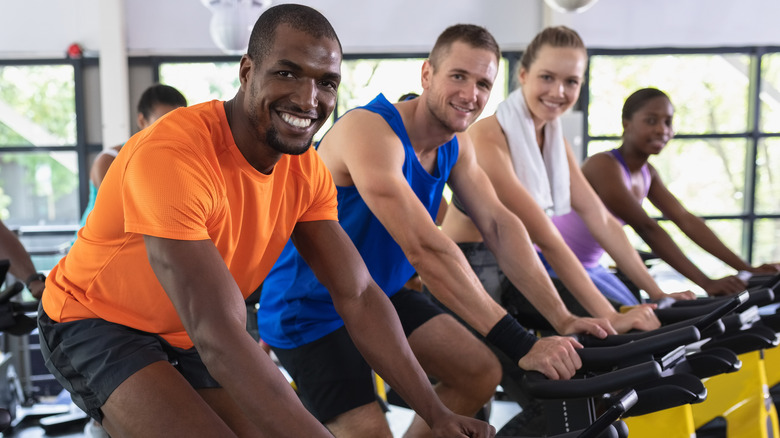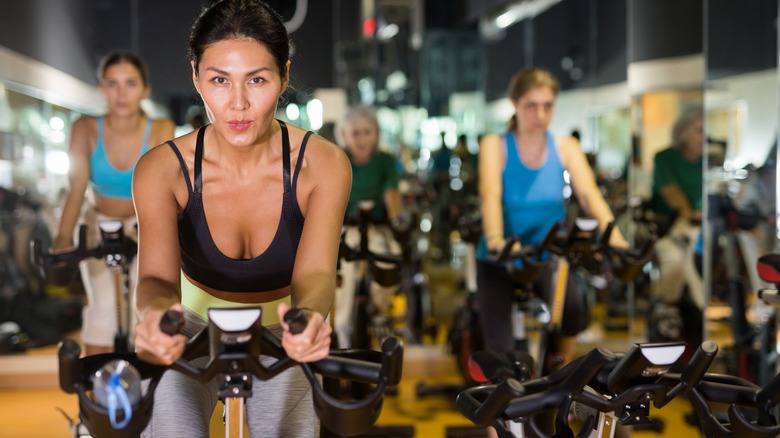How Do Spin Classes Strengthen Your Core?
A hard spin class will have your heart pumping while you jam to the music. You feel your legs firing with each pedal stroke, and you can't seem to find a towel big enough to wipe your sweat. A spin class not only lowers your blood pressure but also builds stability in your core. When you think about it, it makes sense.
With each pedal stroke, your rectus abdominus, obliques, and transverse abdominus fire to keep you from wobbling around the bike saddle (via Byrdie). When the instructor tells you to engage your core, these stabilizers keep you from falling on the handlebars and putting too much pressure on your arms and wrists (via Livestrong). If your indoor bike has toe clips, your core works with your hip flexors to pull up on the pedals. The longer or the more intense the spin class, the more demands are put on your core (via Bike Radar).
Not only can a spin class strengthen your core, but it can also reveal when your core is weak.
How a spin class reveals your core strength
The next time you're in a spin class, take a look at your shoulders. According to a 2010 article in Current Sports Medicine Reports, your shoulders should be relatively square with your handlebars. When you come out of the saddle, your shoulders shouldn't swing back and forth too much. If they do, it's a sign that your hip and core stabilizers need work.
This might not be so much of a problem at first, but the longer the class and the more spin classes you take, other parts of your body are forced to pick up the slack. This might cause pain in the neck or the lower back, according to the article in Current Sports Medicine Reports. However, when your core is strong, you can use more energy to power the pedals. That allows you to endure the grueling peak of a great spin class.
To supplement your spin class, try doing pushups with a stability ball so that your core engages to keep you stable. The more instability you add to your exercises, the stronger your core works to stabilize your body, according to the article in Current Sports Medicine Reports.


